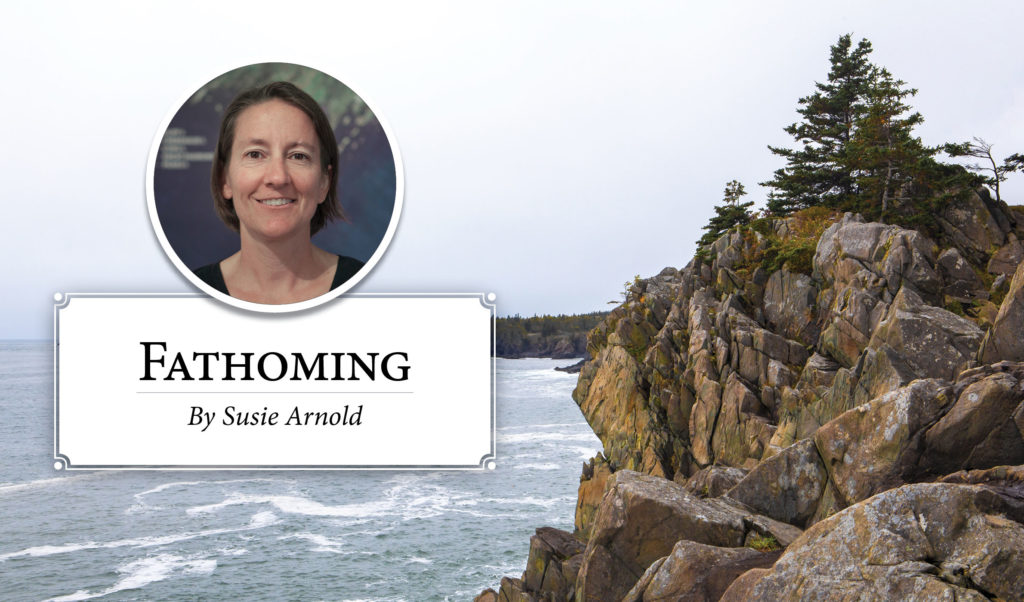Imagine being able to sit down and swipe your phone above your seafood meal and find out where it was harvested and who handled it along the way. This concept may not be too far off.
In a recent conversation about emerging technologies that may impact the marine economy in Maine, I learned about the potential use of Blockchain for tracking seafood.
Blockchain, a new method of record keeping, was created in 2009 for tracking transactions of cryptocurrency like Bitcoin without an intermediary bank. It is a “distributed ledger technology,” where records are “distributed” across a network of decentralized computer nodes. No single entity keeps the books.
Each “block” refers to digital information related to a transaction. These “blocks” are linked and stored in a public database, creating the “chain.” Once a block is added to the Blockchain, it becomes extremely difficult to edit and impossible to delete. It is spreading across the global economy because it keeps thousands of strangers honest, reducing the potential for mistakes or fraud.
Consumers are more interested in knowing where their food comes from, how it was grown and/or harvested, and ultimately how it made it to their plate. Public health officials want to be able to efficiently track and, if needed, shut down the supply of a tainted product. And, importantly, we all want to know that our food is what it says it is.
According to a 2019 analysis of over 27,000 seafood samples, 8 percent was mislabeled, with some products showing evidence of much higher degrees of fraud.
As Maine continues its journey of digital transformation, a major impact may be on our seafood economy. Blockchain technology could help.
“Its impact stems from the need for assurance in full disclosure by traceability and ultimately food safety,” explains Bhaskar Mukhopadhyay. Mukhopadhyay is a mechanical engineer with an MBA and CPA who worked as financial auditor providing risk assurance to Fortune 500 companies. More recently, he launched a company to explore how emerging technologies may help major supply chains.
“In addition to health experts and wholesale dealers, discerning consumers, especially millennials, want to know where their food is coming from,” he says.
Currently, when tracking food, the information is typically fragmented, and on paper and with some electronic data, but it would have to be pieced together, making assurance of its origin difficult. “With Blockchain,” says Mukhopadhyay, “if you have one node, you will be able to access all the information about that supply of food.”
Take, for example, a current method for tracking the origin of bivalve shellfish in the U.S. In Maine especially, this supply chain can be quite short, but this relatively simplistic example illustrates how Blockchain could be applied.
Tracking shellfish (oysters, clams, mussels and scallops) is mandatory with the National Shellfish Sanitation Program. It starts with a harvester tag (name, license number, date, location, and time of harvest). The harvester sells to a dealer, who is relied upon to review the harvester tag and ensure it has come from an approved area and has arrived within the allowed time and temperature.
Then a dealer tag is added before the shellfish makes it to the retailer.
If there is an illness, the product is traced by going to the restaurant and collecting all the tags from shellfish sold that day.
“Sometimes it can be specific and you can tell exactly what they ate,” says Kohl Kanwit, director of public health at the Maine Department of Marine Resources. “Other times it can be a handful of options and you go to the dealers from there.”
It all relies on a complete, legible, and accurate paper trail.
With Blockchain, this tracing could be significantly simplified and automated. The seafood would be tagged at its source with a physical ID (something inexpensive like a QR code or radio frequency ID). The initial information would be recorded on the Blockchain along with the ID.
As it is processed, packed, and moved through the supply chain, additional data like location and temperature could be immutably recorded on the Blockchain. This would create a digital thread of trusted data (from source to table) that is accessible to all the nodes on the distributed network, including the end user, without any extra investigation or other expenses.
We may still be years away from making the technology accessible to all seafood sectors or having QR codes on lobster tails that we can scan at dinner. It may take time for users to recognize proof of return on investment and for our governance systems to catch up to both the technology and the social call for transparency, but we could see some application of Blockchain in Maine’s seafood industry sooner than you might think.
Susie Arnold is a marine scientist at the Island Institute, publisher of The Working Waterfront, working on the impacts of climate change and ocean acidification on marine resources and fisheries-dependent communities.





